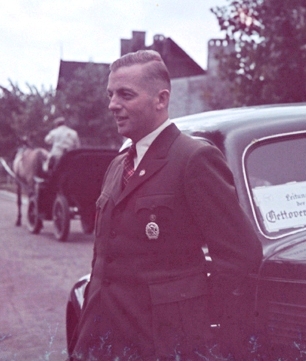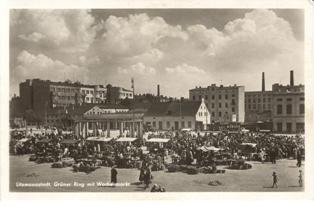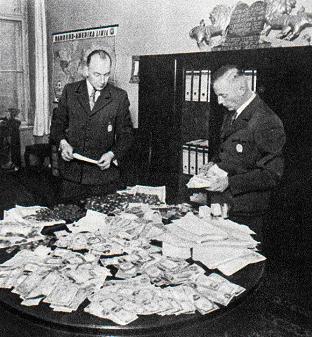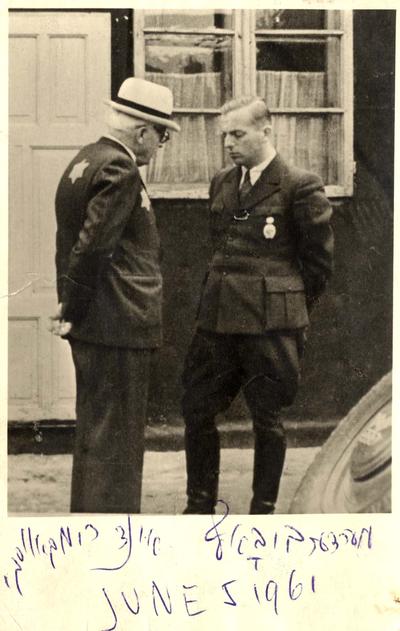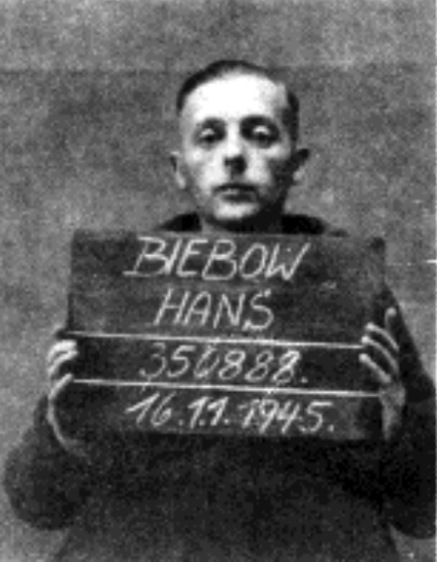Holocaust Education & Archive Research Team |
|
Occupation German Occupation of Europe Timeline
-
[The Occupied Nations]
Poland Austria Belgium Bulgaria Denmark France Germany Greece Hungary Italy Luxembourg The Netherlands Norway Romania Slovakia Soviet Union Sudetenland | |||
Hans Biebow The Nazi Administrator in Lodz
Hans Biebow was born in Bremen, Germany in 1902, the son of Julius Biebow an insurance company director. After graduating from secondary school he entered his father’s company, the district branch of the Stuttgart Insurance Company, as an apprentice
Biebow then joined the cereal and foodstuff bank in Bremen as a trainee from there he went into the cereal business and stayed in this trade until he was twenty-two.
He then went into the coffee trade, after a short period of training with a business friend of his father’s, he opened his own business with very little capital, building over the course of eighteen years into one of the largest companies in Germany, employing approximately 250 workers and office personnel.
When the Lodz ghetto was established in the spring of 1940, Biebow was put in charge of its food and economic office which in October 1940 was re-designated the ghetto administration (Ghettoverwaltung).
The office had a staff of 250 German officials, thanks to his personal ties with Reinhard Heydrich, chief of the Sicherheitsdienst (SD) and with Arthur Greiser, governor of the Warthegau, Biebow enjoyed wide powers in administering the Lodz ghetto.
By exploiting the manpower in the ghetto factories that he established and by robbing the Jews of their property, Biebow was able to extract great profits. He personally made sure that the ghetto was hermetically sealed and that the inhabitants would starve.
He set up special warehouses in the town of Pabiance, where the personal possessions and clothing of the victims of the Chelmno death camp were stored, sorted and sent to the Reich for use by the German population.
Biebow was among the officials who helped organise the transports to the Chelmno death camp from Lodz and the surrounding towns and villages within the Warthegau.
Deportations to the Chelmno death camp began on 16 January 1942 and lasted, with short intervals, until 15 May 1942. During this period 55,000 people were deported from Lodz Ghetto and murdered in Chelmno.
Biebow was determined to retain control of the Lodz ghetto and in order to maintain the flow of profits from the ghetto factories he ensured the ghetto’s continued existence even after the mass deportations during 1942, until the summer of 1944.
However, once it was decided that the ghetto would be liquidated Biebow played an active role in organising transports to both Chelmno death camp, which had been re-established and Auschwitz-Birkenau, from June to August 1944, and in the final liquidation of the Lodz ghetto.
He excelled in deception tactics, convincing the Jews that the transports from the ghetto would take them to work camps attached to German factories, he also completely deceived Chaim Rumkowski, the Judenrat chairman, in the following manner:
“We also learned something of Rumkowski unexpected departure. Biebow included in that transport Rumkowski’s brother Jozef and his wife, who for some time was referred to as “Princess Helena” or the “Princess of Kent.”
The Chairman went to the Ghetto Administration, asking that they do not deport his immediate family. Biebow refused, but he added, “if you wish, you can accompany them.” Rumkowski accepted this half- facetious offer.
Biebow drove him to the station himself, assigned him a separate car on the train and placed only twelve of Rumkowski’s closest people with him. He said goodbye to him, most sincerely. As soon as he turned around, however, the Schupo standing guard – probably on Biebow’s instructions – began assigning the deportees just arriving at the station to that very car.
And so there were finally over eighty people in Rumkowski’s car.”
Biebow remained in Lodz until January 1945 where he supervised the removal to Germany of possessions left behind by the ghetto’s inhabitants.
After the war, Biebow was tried by a Polish court in Lodz, he was sentenced to death and executed in 1947.
Sources
Encyclopedia of the Holocaust. Macmillan Publishing Company, New York, 1990 . Lodz Ghetto compiled by Alan Adelson and Robert Lapides, published by Viking Penguin 1989. Holocaust Historical Society. USHMM
Copyright Feuer, Webb, Lisciotto H.E.A.R.T 2007
|
